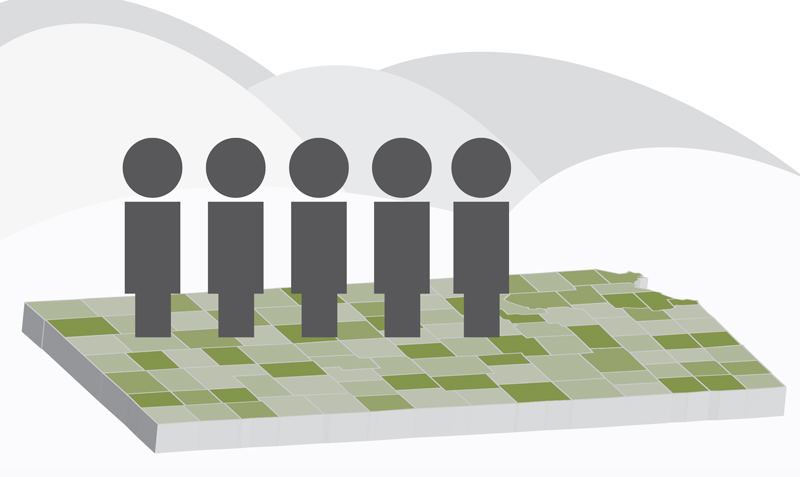The Kansas Health Institute has released its Annual Insurance Update, providing an in-depth look at insurance coverage in the Sunflower State. The report examines public and private insurance coverage using data from the 2012 U.S. Census Bureau’s American Community Survey (ACS). This information may be used to better understand how the Affordable Care Act (ACA) and other federal health policy changes could affect decision-making in Kansas.
Uninsured Kansans
About 359,000 Kansans – or 12.6 percent of the population – were uninsured in 2012, similar to the rate in 2011, but significantly lower than the national rate of 14.8 percent. Of this number, approximately 56,000 are children. However, the rate of uninsured children in Kansas has been declining since 2008, from 9.3 percent to 7.3 percent in 2012.
-
- 70.8 percent of all uninsured Kansans are between the ages of 19 and 44. Two-thirds have family incomes above the federal poverty level ($23,050 annually for a family of four in 2012).
- Although employment improves a person’s chance of being insured, more than three out of four uninsured Kansas adults are working.
- The ACA’s health insurance marketplaces provide tax subsidies for those who qualify (incomes between 100 and 400 percent of the federal poverty level) to help cover the cost of plan premiums. Sixty-one percent of Kansans who are uninsured could be eligible for this financial assistance when purchasing coverage.
Kansans with Insurance
More than half – 52.2 percent – of all Kansans are covered through employment-based health insurance and 29.4 percent have public coverage, such as Medicare or Medicaid.
-
- Over half (51.5 percent) of Kansas children are covered through their parents’ employment-based health insurance plan, and 35 percent receive public insurance.
- Essentially all Kansans over the age of 65 have public insurance, primarily Medicare or a combination of Medicare and Medicaid.
- Consistent with national trends, the rate of uninsurance for 19-25 year-olds has declined significantly since 2009 (26.8 percent to 22.3 percent), likely a result of the provision of the ACA which allows dependents to stay on their parents’ insurance until age 26.
“This analysis helps us inform policymakers about the important trends in insurance coverage, especially with the implementation of federal health reform,” said Scott Brunner, senior analyst and strategy team leader. “The Annual Insurance Update provides context and historical information about health insurance coverage as Kansans try to understand the potential impacts of the ACA.” Brunner is a former Medicaid director for the state.
The report also provides information related to insurance coverage by race and ethnicity, as well as maps that depict differences in coverage and Medicaid participation across the state. Finally, the report examines how insurance coverage in Kansas has changed since the passage of the Affordable Care Act in 2010, which provides some insight into how the economy, job market and changes in federal and state health policy affect coverage.
